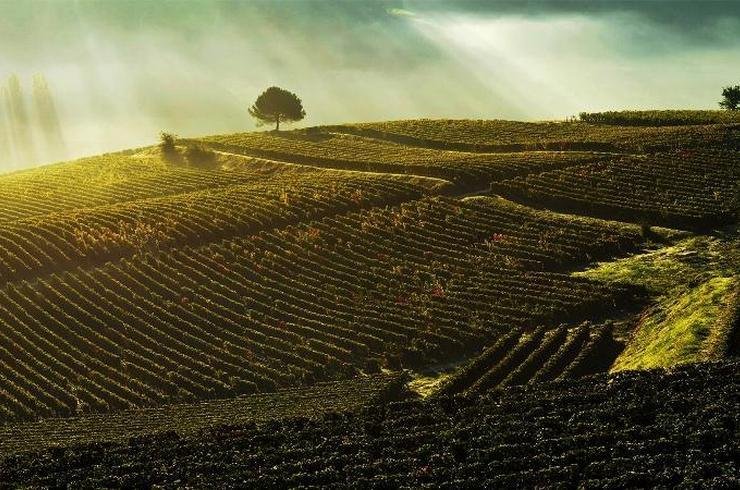
На сайте используются cookie файлы
The site uses cookie files
Данный сайт имеет возрастное ограничение!
This site has age restrictions!
Я подтверждаю, что мне, увы, уже давно исполнилось 18 лет
The weather in Bordeaux is getting hotter and drier, which calls into question the viability of today’s varieties, providing the quality, characteristics and volume necessary for sustainability in the coming decades. Wine regions must accept this challenge of nature and re-adjust.
The French organization INAO (Institut national de l’origine et de la qualité) has already approved six grape varieties that will be added to the grapes allowed for the production of Bordeaux entry-level wines, AOC Bordeaux and AOC Bordeaux Supérieur. Other categories are expected to follow. The vine-growers hope these innovations will prepare the region for the climate change.
Studies have been conducted for more than 11 years in an experimental vineyard in Pessac Leognan to determine the suitability of grapes for warmer, drier climates. They have resulted in establishing new, recently approved varieties: Touriga Nacional, Castets, Marselan and Arinarnoa for red wines, and Alvarinho and Lilorila for whites.
Castets is an almost forgotten grape variety from the southwest of France that is naturally resistant to grape diseases and gives vibrant wines suitable for aging.
Touriga Nacional is a complex, full-bodied and aromatic flagship variety from Portugal.
Marselan and Arinarnoa were created decades ago by crossing existing varieties: Grenache and Cabernet Sauvignon for the former and Tannat and Cabernet Sauvignon for the latter.
Alvarinho and Lilorila are aromatic white grape varieties.

All problems associated with climate change come down to the ideal ripening period, which in Bordeaux falls between 10 September and 10 October. “You make great wines if you harvest in late September or early October, rather than August,” – winemaker Kees van Leeuwen, who is in charge of the project, explains to Wine Spectator. “If the grapes ripen in August or July, in the hottest part of summer, then the berries are unbalanced: too low acidity, too much sugar, weak flavor … Therefore, historically, producers have always planted varieties that ripen in local climatic conditions at the end of the season.”
But with climate change, higher temperatures mean that flowering, veraison and ripening take place earlier and earlier. And there is a risk that one day they will ripen in August.
Merlot and Sauvignon Blanc may be the first victims, experts say. Climatic forecasts predict that Merlot, as an early ripening variety, is to leave its ideal ripening window by 2035-2040. And 66% of Bordeaux’s red wine vineyards are planted with this variety.
The late maturing varieties such as Cabernet and Petit verdot will stay within their ideal window for much longer, until around 2050. “Most of our research should be completed by 2050,” says van Leeuwen.

“This is an exciting area and illustrates one of the numerous steps Bordeaux is taking to prepare for the future,” Allan Sichel, CEO of négociant Maison Sichel, says. “We are planning to plant some of these varieties soon”.
Does this mean that Cab-Touriga blends will soon be bottled at Château Bordeaux? They will be bottled, but not shorty.
INAO’s permission to cultivate new varieties has significant limitations. They can plant only 5% of the vineyard area, and the grapes of these varieties cannot be more than 10% of the volume in the final mixture. At the same time, the grape varieties will not be indicated on the labels: consumers will not know whether they are drinking wine including new varieties.
The trial period is 10 years. This stage will enable the growers to test the grapes in their fields and cellars. Therefore, it is impossible to say that newly approved varieties are a final choice. Some of them are likely to be rejected, whereas others will be maintained.
New experiments are already underway. “Last year, we planted three Cypriot grape varieties that are very drought tolerant,” – van Leeuwen said. – I think that new varieties are less subject to change if they are chosen correctly. In addition, it will have less impact on the typicality of Bordeaux wines than if we do not change the varieties. “

It is important to remember that grapes have been changed in the region before. Merlot has only become popular in recent decades. And two centuries ago, dozens of different varieties were grown throughout the region!
Although consumers will not know from the label whether they are participating in this experiment (at least until the end of the trial period), merchants are confident that Bordeaux lovers will appreciate their quality and identity. “The goal is to preserve the characteristics of Bordeaux wines, so there should be no problem selling these wines as a Bordeaux blend,” – Sichel says. However, if nothing is changed, van Leeuwen argues that a wine made from Merlot in Bordeaux in 2050 will taste very different because it will ripen in August, contain 16 per cent of alcohol and have a pH of 4.1.
По материалам winespectator.com
Фото: terredevins.com, xtrawine.com, vigneron-independant.com, freepik.com
03.09.2024